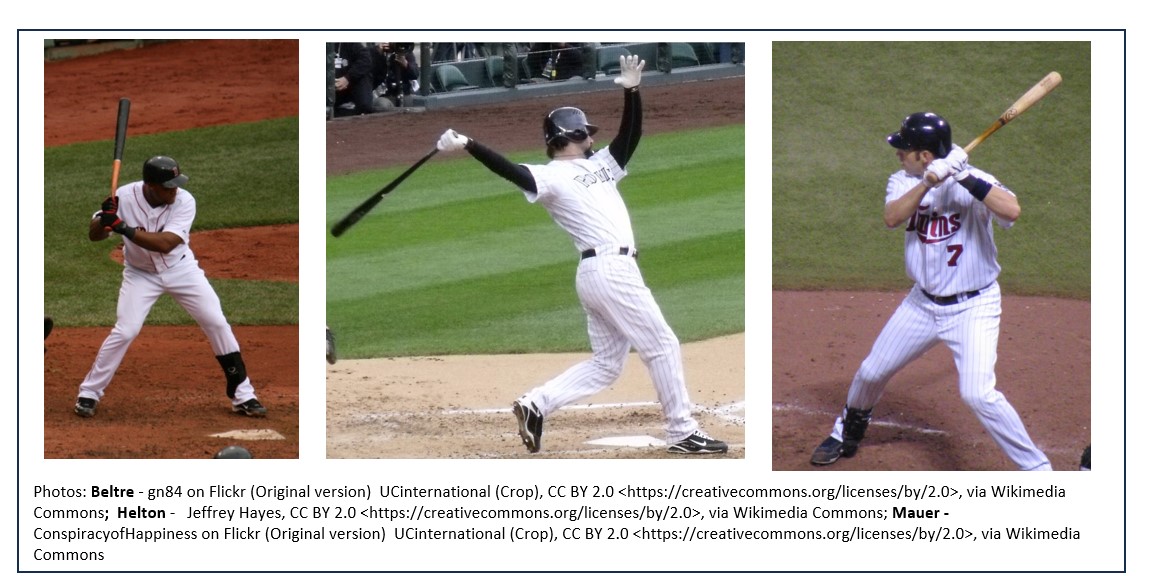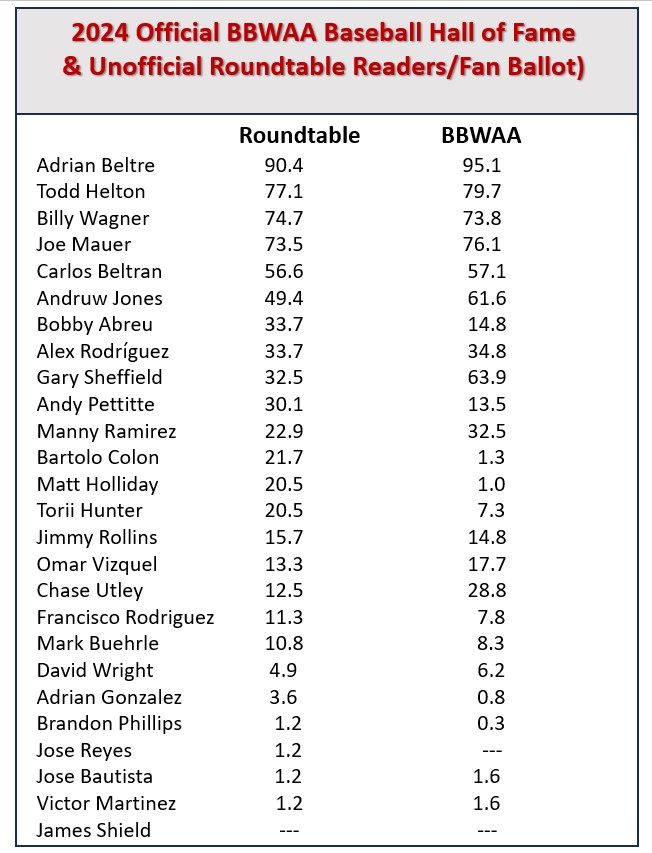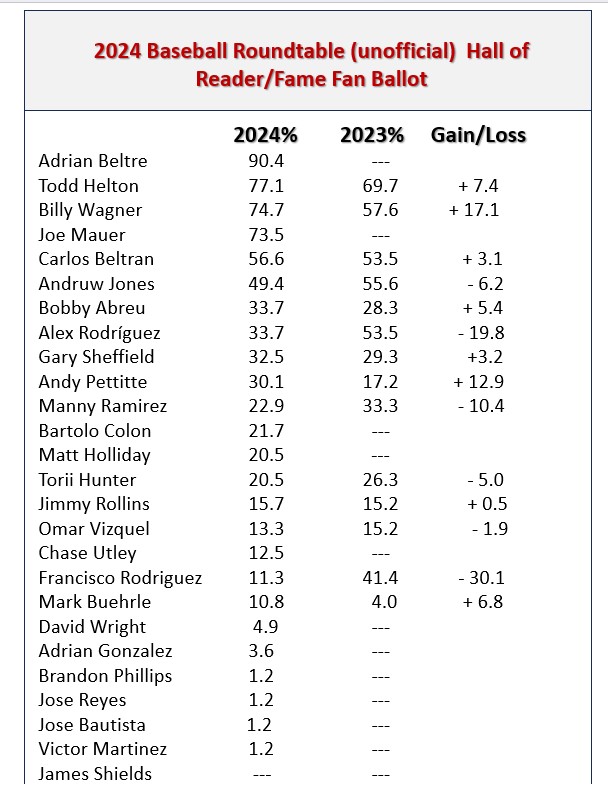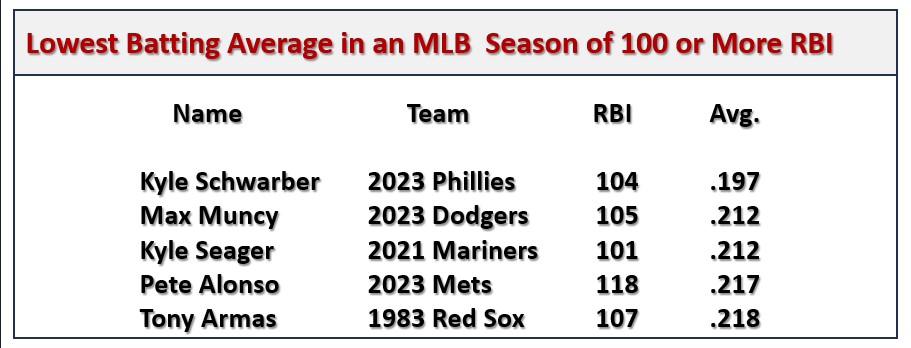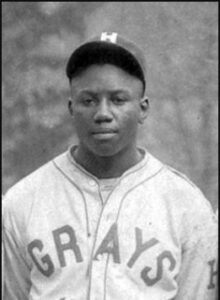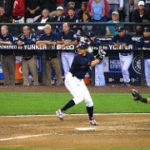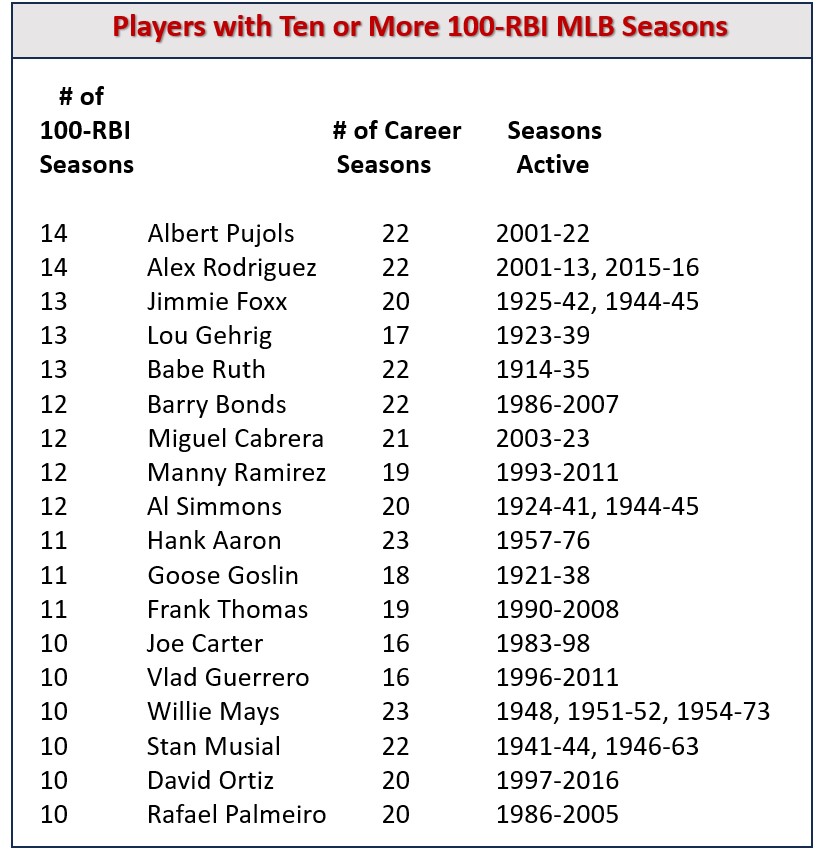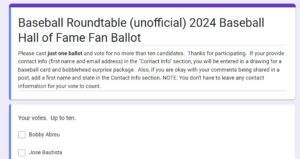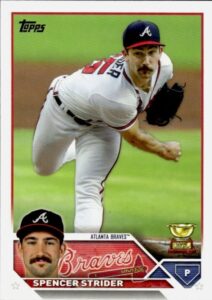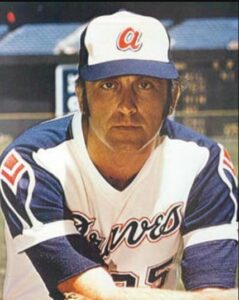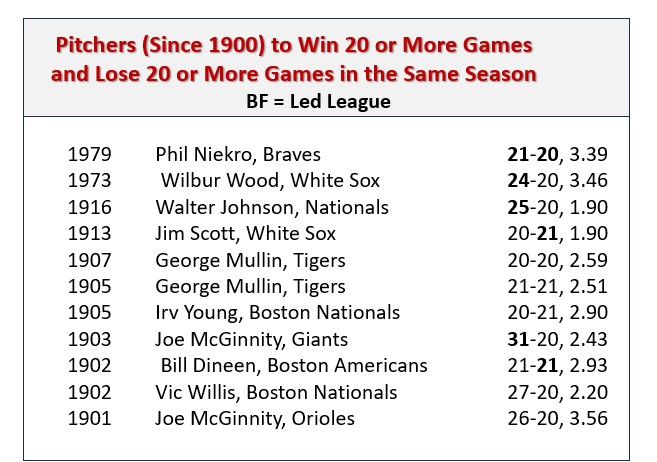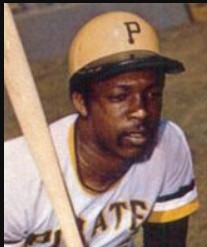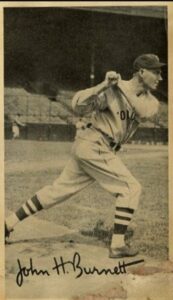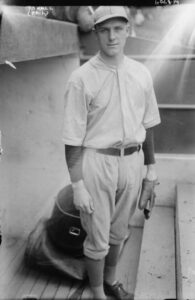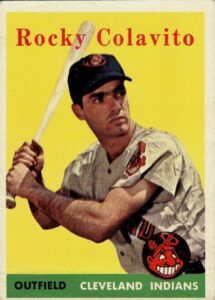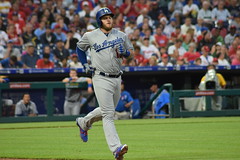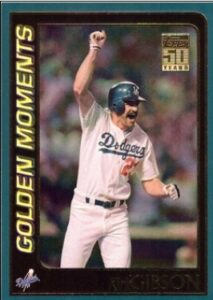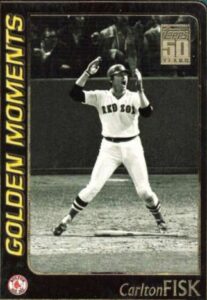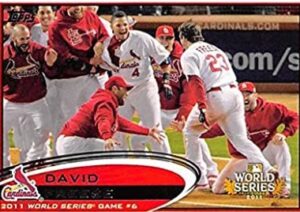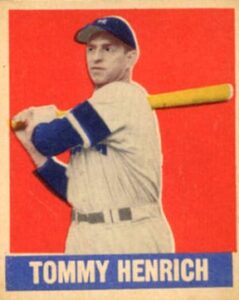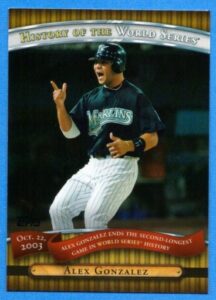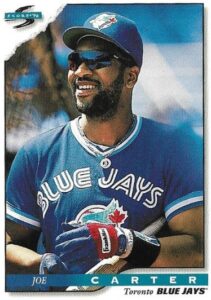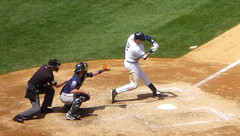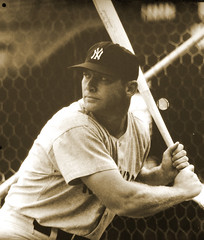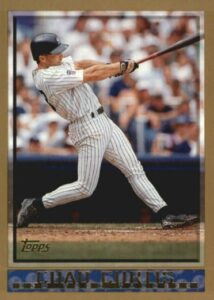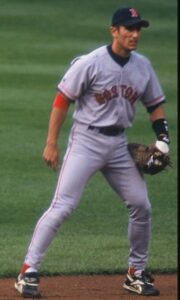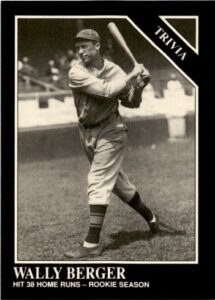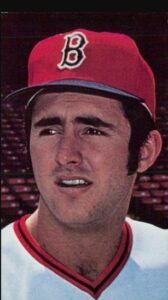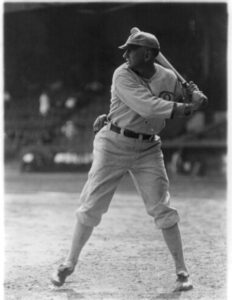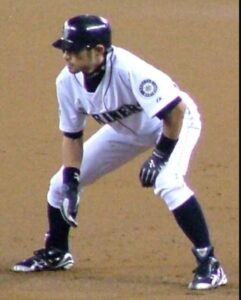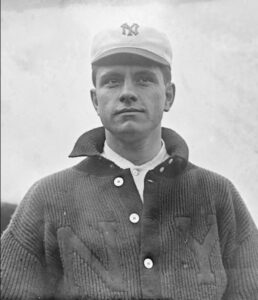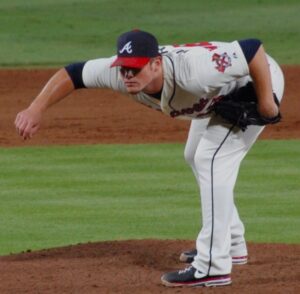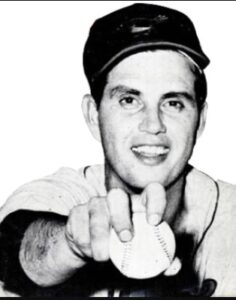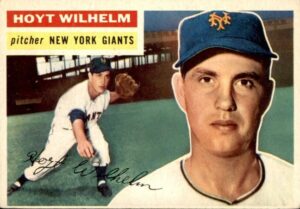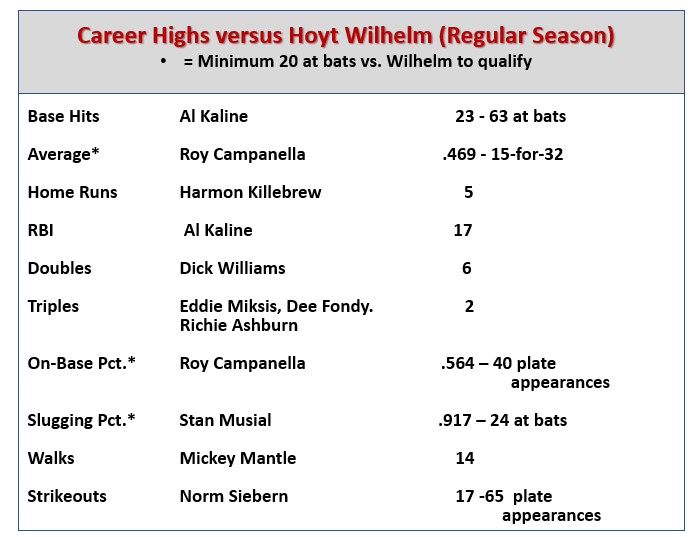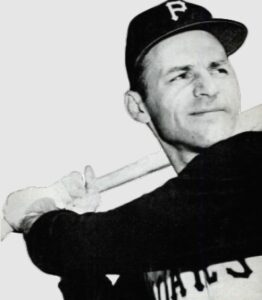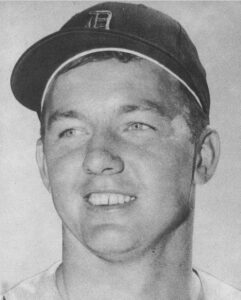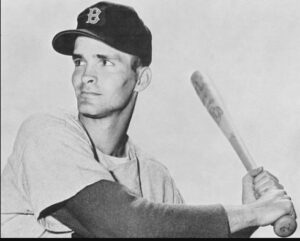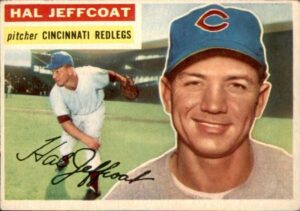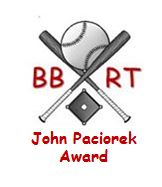 Each year, since 2014, Baseball Roundtable has announced a John Paciorek Award (JPA) honoree. The JPA recognizes players who have had short, sometimes very short, major-league careers, but whose accomplishments, nonetheless, deserve recognition. Past winners have included: a player who collected at least one base hit in every MLB game he played; a player whose every MLB hit (three in nine career at bats) was a home run; a player who had only one MLB at bat, but earned a World Series ring and a Purple Heart; a war hero who pitched in the majors on one leg; and much more. There are links to the bios of past honorees later in this post.
Each year, since 2014, Baseball Roundtable has announced a John Paciorek Award (JPA) honoree. The JPA recognizes players who have had short, sometimes very short, major-league careers, but whose accomplishments, nonetheless, deserve recognition. Past winners have included: a player who collected at least one base hit in every MLB game he played; a player whose every MLB hit (three in nine career at bats) was a home run; a player who had only one MLB at bat, but earned a World Series ring and a Purple Heart; a war hero who pitched in the majors on one leg; and much more. There are links to the bios of past honorees later in this post.
(Note: Information on John Paciorek’s career – the inspiration for the JPA – can be found at the end of this post. Paciorek’s day in the sun constitutes arguably the best one-game MLB career ever.)
This year’s John Paciorek Award honoree is 5′-5″, 155-lb. outfielder Irv Waldron, whose MLB career lasted just one season (1901) and who still holds the record for base hits (186), runs scored (102) and total bases (226) by a player who played just one MLB campaign. In fact in his “first-and-only” major-league season, the “bats-left/throws-right” outfielder led the American League in games, at bats, plate appearances – and finished sixth in times on base and seventh in total bases
A Leap, But Not Too Far
In 1901, Irv Waldron made his “jump” from the minor leagues to the majors without changing cities, teams or even leagues.
Waldron got a late start on his MLB career making the big leagues with the American League Milwaukee Brewers after after six minor-league campaigns (Pawtucket Phenoms, St. Joseph Saints, Milwaukee Brewers/Creams). He was pretty comfortable with the AL Brewers. He had played with the Brewers/Creams in the Western League from 1898-1899) and also as part of the the renamed American League (still a minor league) in 1900. The AL was designated a major league in 1901, making Waldron’s record-setting “one-and-only” season possible. In 1900, when the American League was still considered a minor-league, Waldron hit .294 for the Brewers. In 1901, Waldron (in the now major-league American League) was hitting .297 when he was released by the Brewers in early July (July 7) and immediately (July 8) signed by the Senators. As of July 7 , Milwaukee was in last place (22-41) and the Senators were in fifth place (26-26).
Let’s Multi-Task
During the 1901 AL season, Waldron had 56 multi-hit games, including six games of at least four bits. On April 28, in just his fourth MLB game (a Brewers 12-11 loss in Detroit), he collected three singles, two doubles, scored once and drove in three in six at bats. During his lone MLB season, Waldron had three hitting streaks of at least ten games.
In 1902, Waldron found himself back in A-Ball (Kansas City Blue Stockings of the Western League), where he hit .322 in 132 games). He played in the minors for nine seasons after his one MLB year (1902-1906, 1908-11), suiting up for the KC Blue Stockings, San Francisco Seals, Denver Grizzlies, Lincoln Railsplitters, Utica Utes, Scranton Miners and Meridian White Ribbons. Not a lot has been written or documented about Waldron’s quick departure from the majors. A 2014 article (Why Irv Waldron may have left the majors) by Graham Womack (baseballpastandpresent.com) offers some interesting and plausible insights. He notes that Waldron did have some defensive issues (third in errors by an outfielder in that 1901 season) and that, in those early years of baseball, players (even with a “flaw or two”) could often make better money in the minors than in the majors. There was also that attraction of playing in the sunny West, even if it meant the minor leagues. Consider 2021 JPA honoree pitcher Henry Schmidt, who, in his lone MLB season (1903), went 22-13 for the NL Brooklyn Superbas (Dodges). Schmidt then turned down Brooklyn’s contract offer and signed with the Oakland Oaks of the then Class-A Pacific Coast League (becoming the only MLB pitcher whose only major-league season was a 20-win campaign).
More #InBaseballWeCountEverything … Or Sometimes Short Can Be Sweet
Some fun research by Christopher Pellerito shows that with his one-season of 186 hits, Irv Waldron has the third-highest average number of hits per season among MLB players who have finished their careers – trailing just Kirby Puckett (192.0 hits per season over 12 seasons) and George Sisler (187.5 hits per season over 15 campaigns). Waldron’s 186 outdistances such luminaries as Pete Rose (177.3); Ty Cobb (174,5); and Ichiro Suzuki (171.6).
Finally, some Baseball Roundtable “one things leads to another.”
In putting together his post, I came across this tidbit. In Irv Waldron’s first MLB game – on April 25, 1901 – he led off and played RF for the Milwaukee Brewers versus the Tigers in Detroit. In that game, he was on the field for the greatest ninth-inning comeback in MLB history. Trailing 13-4 in the bottom of the ninth, the Tigers scored ten runs in the bottom of the inning on ten hits (five doubles), one walk, one wild pitch and one Milwaukee error.
Primary Resources: baseball-reference.com.
____________________________________
Here’s a look at – and links to – past JPA Award honorees:
2014 – Brian Scott Dallimore
In his first start (not his first game) for the 2004 Giants, Dallimore had two singles, a Grand Slam (his first MLB hit and only MLB home run), a walk and a hit by pitch. For the full JPA take on Dallimore’s 27- game MLB career, click here.
2015 – Roy Gleason
Gleason played in just eight MLB games, had a double in his only MLB at bat – but also earned a World Series ring (1963) and a Purple Heart. Ultimately, he was the only ballplayer with MLB experience to serve on the front lines in Vietnam. For the full JPA take on Gleason, click here. Note: Gleason’s life is detailed in the book “Lost in the Sun – Roy Gleason’s Odyssey from the Outfield to the Battlefield.”
2016 – John Allen Miller
Miller played just 32 MLB games (during the 1966 and 1969 seasons), taking the field (at 1B/LF/3B/2B) for the Yankees and Dodgers. Miller collected ten hits in 61 MLB at bats (.164 average) and hit just two home runs – but he made those long balls count – becoming one of just two players in MLB history to homer in their first and final official appearances in a major-league batter’s box. For more on Miller, click here.
2017 – Chris Saenz
RHP Chris Saenz’ big day came on April 24, 2004 – when he was called up from Double-A Huntsville (where he was 1-1, 3.86) to make a spot start against the Saint Louis Cardinals, whose powerful lineup included the likes of Albert Pujols, Scott Rolen, Jim Edmonds and Reggie Sanders. The rookie went six innings, giving up just two hits, three walks and no runs, while fanning seven. Two days after this debut, he was on his way back to Huntsville, where he suffered an elbow injury and never returned to the majors. Statistics before 1900 can be sketchy, but baseball-reference.com shows that Saenz is the only pitcher to complete a one-game MLB career of at least five innings pitched, without giving up a single run (earned or unearned). For more details on this JPA honoree, click here.
2018 – Keith McDonald
McDonald’s MLB career (Cardinals 2000-2001) covered just eight games and 11 plate appearances (nine at bats) and three hits – but he made them count. All of McDonald’s safeties were home runs – making him the only MLB player with more than one career hit who can look back on major league career in which his every hit was a home run. .For the full story, click here.
2019 – Harley Hisner
Hisner’s MLB tenure encompassed the day of September 30, 1951. That’s when the 24-year-old righty faced the New York Yankees – and a lineup that included five future Hall of Famers: Mickey Mantle in RF; Joe DiMaggio in CF; Phil Rizzuto at SS; Johnny Mize at 1B; and Yogi Berra behind the plate. In his very first MLB inning, Hisner faced five batters, four of them future Hall of Famers, and gave up two singles and no runs. His place in history? One of those singles was Joe DiMaggio’s last MLB safety. For more on Hisner and his ongoing involvement in and love of the game (he went on to earn the Northeast Indiana Baseball Association Colin Lister Award for “dedication to the game of baseball and its historic legacy,” click here.
2020 – Bert Shepard
Shepard set aside his baseball mound dreams in 1943 – after four minor-league seasons – to enlist in the U.S. Army, where he became a P-38 Lightning fighter pilot. Shepard was shot down on his 34th combat mission and, while a prisoner of war, his wounds resulted in the amputation of his right leg below the knee. Upon his release (a prisoner exchange), Shepard did not surrender his dreams and fought his way to the major leagues. He made one major-league appearance (for the Washington Senators), pitching 5 1/3 innings of three-hit, one-run ball. While Shepard’s MLB career consisted of that sole appearance, he did continue to pitch, coach and manage in minor leagues – and his story proved an inspiration for disabled veterans. For more of Bert Shepard story, click here.
2021 – Henry Schmidt
Henry Martin Schmidt didn’t make it to the big leagues until eight seasons after his professional (minor-league) debut. In fact, he was just two months shy of his 30th birthday when he first took the major-league mound. Why did it take so long? Simple answer – location. He had considerable difficulty “locating” his pitches. While it took a long time for Schmidt to make it to the major leagues, it didn’t take him long to leave MLB. He lasted just one season – and is the only pitcher in MLB history who was a 20-game winner in his only major league season. Why was his MLB career so short? Simple answer – location. He did not care for the geographic “location” of major-league baseball. For more on Henry Schmidt’s unusual career, click here.
2022 – Karl Spooner
Southpaw Spooner holds a share of the record for strikeouts in an MLB debut (15) and also threw complete-game shutouts in each of his first two starts. After earning a late September (1954) call-up (to the Dodgers), the 23-year-old rookie was thrown right into the fire – starting on September 26 against the league-leading and Dodgers’ chief rival Giants. His 27 strikeouts in his first two appearances also remain an MLB record. A shoulder injury suffered in 1955 Spring Training cut Spooner’s career short. He didn’t get his first start of the 1955 season until May 15 and finished the season, his last in the major leagues, 8-6, 3.65 in 29 games (14 starts). Spooner pitched for three more seasons in the minors, but never recaptured 1954 glory. For the full Karl Spooner story, click here.
2023 – Glenn Williams
Williams had a 13-game major-league career – all in June of 2005 and all with the Minnesota Twins. Over his 13-games in “The Show,” Williams hit a robust .425 and collected at least one hit in every game he played. Williams holds the MLB record for the longest MLB career for a player who was never held hitless in any MLB game he appeared in. For the full Glenn William story, click here.
—–INSPIRATION FOR THE JPA—–
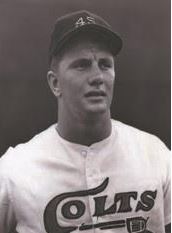 John Paciorek – signed out of Saint Ladislaus High School in Hamtramck, Michigan (where he had starred in football, basketball and baseball) – appeared in his first major-league game on the final day of the 1963 season (September 29) at the age of 18. The 6’ 1”, 200-pound outfielder had spent the 1963 season with Class-A Modesto Colts. The Colts’ parent club, the Houston Colt .45s (that was the current Astros’ franchise name back then), was suffering through a difficult season. The team was 65-96 going into that final game. Looking to the future, Houston had, in fact, fielded an all-rookie lineup (average age 19) on September 27. Youth was still being served two days later when John Paciorek started his first MLB game. The results were surprising – and worthy of recognition.
John Paciorek – signed out of Saint Ladislaus High School in Hamtramck, Michigan (where he had starred in football, basketball and baseball) – appeared in his first major-league game on the final day of the 1963 season (September 29) at the age of 18. The 6’ 1”, 200-pound outfielder had spent the 1963 season with Class-A Modesto Colts. The Colts’ parent club, the Houston Colt .45s (that was the current Astros’ franchise name back then), was suffering through a difficult season. The team was 65-96 going into that final game. Looking to the future, Houston had, in fact, fielded an all-rookie lineup (average age 19) on September 27. Youth was still being served two days later when John Paciorek started his first MLB game. The results were surprising – and worthy of recognition.
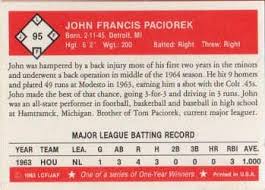 Playing right field and batting seventh in a 13-4 win over the NY Mets, Paciorek ended up with three hits and two walks in five plate appearances, with four runs scored and three runs batted in. Perhaps equally surprising is that it was not only Paciorek’s first major-league appearance, it was to be his only MLB appearance. Back pain the following spring, followed by surgery (he played 49 minor league games in 1964 and missed all of the 1965 season), put an end to his MLB playing days. (Paciorek did play in four more minor-league seasons.) Still, you will find John Paciorek in the Baseball Encyclopedia and his is arguably the greatest one-game MLB career ever. Among one-gamers, he holds the record for times on base and runs scored, and shares the record for batting average, on base percentage and RBIs.
Playing right field and batting seventh in a 13-4 win over the NY Mets, Paciorek ended up with three hits and two walks in five plate appearances, with four runs scored and three runs batted in. Perhaps equally surprising is that it was not only Paciorek’s first major-league appearance, it was to be his only MLB appearance. Back pain the following spring, followed by surgery (he played 49 minor league games in 1964 and missed all of the 1965 season), put an end to his MLB playing days. (Paciorek did play in four more minor-league seasons.) Still, you will find John Paciorek in the Baseball Encyclopedia and his is arguably the greatest one-game MLB career ever. Among one-gamers, he holds the record for times on base and runs scored, and shares the record for batting average, on base percentage and RBIs.
Paciorek, by the way, went on to become a high school teacher and multi-sport coach and is the author of the books (Plato and Socrates – Baseball’s Wisest Fans; The Principles of Baseball: And All There Is To Know About Hitting; and If I Knew Then What I Know Now. You also can enjoy Paciorek’s prose (and expertise) at his blog “Paciorek’s Principles of Perfect Practice” by clicking here. You can find out even more about Paciorek in Steven Wagner’s 2015 book Perfect: The Rise and Fall of John Paciorek, Baseball’s Greatest One-Game Wonder.
A final note. John Paciorek’s insight into the national pastime should come as no surprise. Paciorek comes from a true “baseball family.” He was the first born of eight siblings and was followed to the big leagues by younger brothers Jim and Tom Paciorek. (Like John, Jim’s MLB career was short – 48 games for the Brewers in 1987. Brother Tom, however, achieved a .282 average over an 18-season MLB career.
Baseball Roundtable – Blogging Baseball Since 2012.

 Baseball Roundtable is on the Feedspot list of the Top 100 Baseball Blogs. To see the full list, click here.
Baseball Roundtable is on the Feedspot list of the Top 100 Baseball Blogs. To see the full list, click here.
Baseball Roundtable is also on the Anytime Baseball Supply Top 66 Baseball Sites list. For the full list, click here.
I tweet (on X) baseball @DavidBaseballRT
Follow Baseball Roundtable’s Facebook Page here. More baseball commentary; blog post notifications.
Member: Society for American Baseball Research (SABR); Negro Leagues Baseball Museum; The Baseball Reliquary.
P1022

